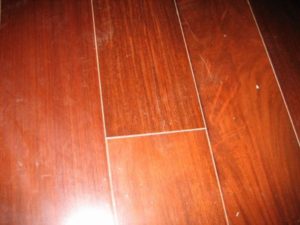Have you ever tiptoed across your hardwood floors in the dead of night, only to be met by a symphony of creaks and groans? It’s a sound that can make us jump, or even worry about the structural integrity of our homes. But is it something to be concerned about, or just a natural part of owning an older home?

Image: designingyourperfecthouse.com
The truth is, creaky floors are a very common occurrence, particularly in homes with older wooden structures. That doesn’t mean we should ignore the sounds, but understanding why floors creak can help us address any underlying issues—and maybe even learn to appreciate the unique character they bring to our homes.
Understanding the Roots of the Creaks
The creaking of floors is primarily caused by the movement of wooden floorboards, either rubbing against each other or against structural beams. These movements can be caused by a variety of factors, leading to a range of creaking sounds.
- Shifting and Settling: As homes age, the foundation and framing can settle, shifting the position of floorboards and creating friction. This is particularly common in older homes with wooden framing or in areas with shifting soils.
- Expansion and Contraction: Wood is a natural material that expands when it’s warm and contracts when it’s cold. This expansion and contraction can put stress on floorboards, causing them to rub against each other. You may notice your floors creak more in the winter or during periods of rapid temperature change.
- Wear and Tear: Over time, the nails and fasteners that hold floorboards in place can loosen or pull away from the wood. This can cause the boards to move independently, creating a creaking sound. Heavy foot traffic, furniture moving, and even regular floor cleaning can contribute to this wear and tear.
- Structural Issues: In some cases, floor creaking can be a sign of more serious structural issues, such as a sagging subfloor or weakened joists. If the creaking is accompanied by noticeable sagging or a feeling of instability, it’s important to consult a qualified professional for inspection.
The Science Behind the Sound
While the creaking itself may seem unpredictable, the sound itself can provide valuable clues about the source of the problem. Paying attention to the pitch, intensity, and pattern of creaks can help us investigate further.
- High-pitched Creaking: This often indicates friction between floorboards, which might be caused by loose boards or insufficient subfloor support.
- Low-pitched Creaking: A deep, groaning sound is often associated with structural movement, such as joists flexing or shifting.
- Random Creaking: Random creaking sounds in different locations could be due to minor settling or loose fasteners which may not require immediate attention.
- Localized Creaking: Creaking that is concentrated in a specific area could signal a problem with a particular floorboard or joist.
Addressing the Creaking Symphony
While some creaking is inevitable, there are steps you can take to reduce the noise and address any potential issues.
- Secure Loose Floorboards: The first step is to identify and secure any loose floorboards. You can try driving in new nails or screws to tighten the boards to the subfloor. If the nails or screws are pulling out, consider using longer fasteners or wood glue for a stronger bond.
- Tighten Subfloor Connections: When floorboards are securely attached but still creak, it’s possible that the subfloor itself is shifting. You can attempt to tighten joists to the support beams using additional fasteners.
- Add Subfloor Support: If you’re dealing with sagging or weak subfloors, you might need to install additional support beams or joists. This is often a more involved process and should be undertaken by a professional contractor.
- Floor Covering Solutions: Adding area rugs, thick mats, or carpets can also help to muffle the sounds of creaking floors.
- Lubrication: When creaking is caused by friction between floorboards, a small amount of a dry lubricant like graphite can be sprinkled in the cracks to reduce the noise.

Image: www.reddit.com
Is It Normal For Floors To Creak
A Symphony of Character
While the creaks and groans of our floors can be a nuisance, it’s important to remember that they’re often a sign of history and age. Our homes tell stories through their sounds, and the creak of a floorboard can evoke memories of footsteps past, furniture being moved, and the laughter of families long gone.
Instead of viewing floor creaking as a problem, try to embrace it as a part of the unique personality of your home. The next time you hear a floor creak, take a moment to imagine the stories it whispers and consider the history that those sounds represent.
Remember: If you’re concerned about the severity of your floor creaking, don’t hesitate to contact a home inspector or contractor. They’ll be able to assess the situation and recommend the most appropriate solutions.






